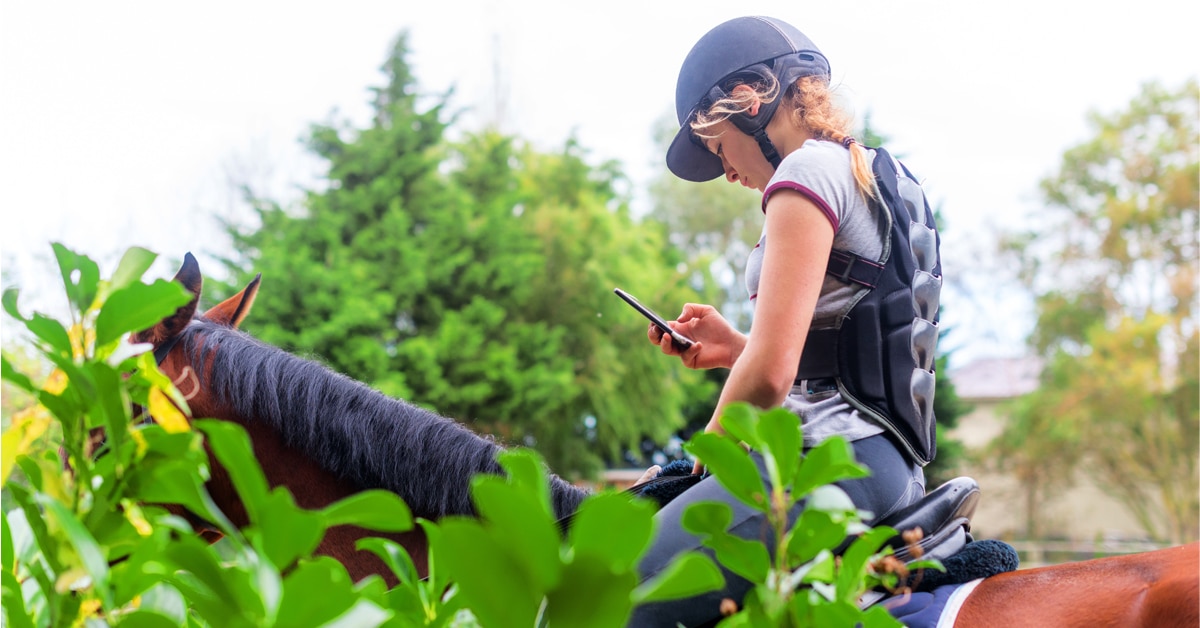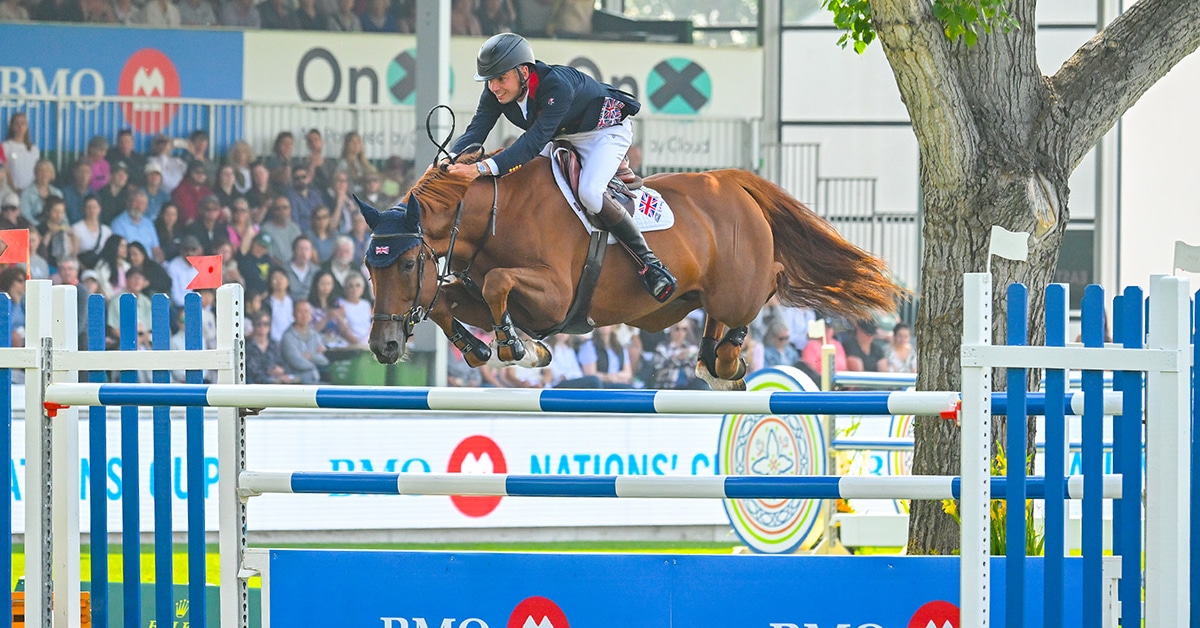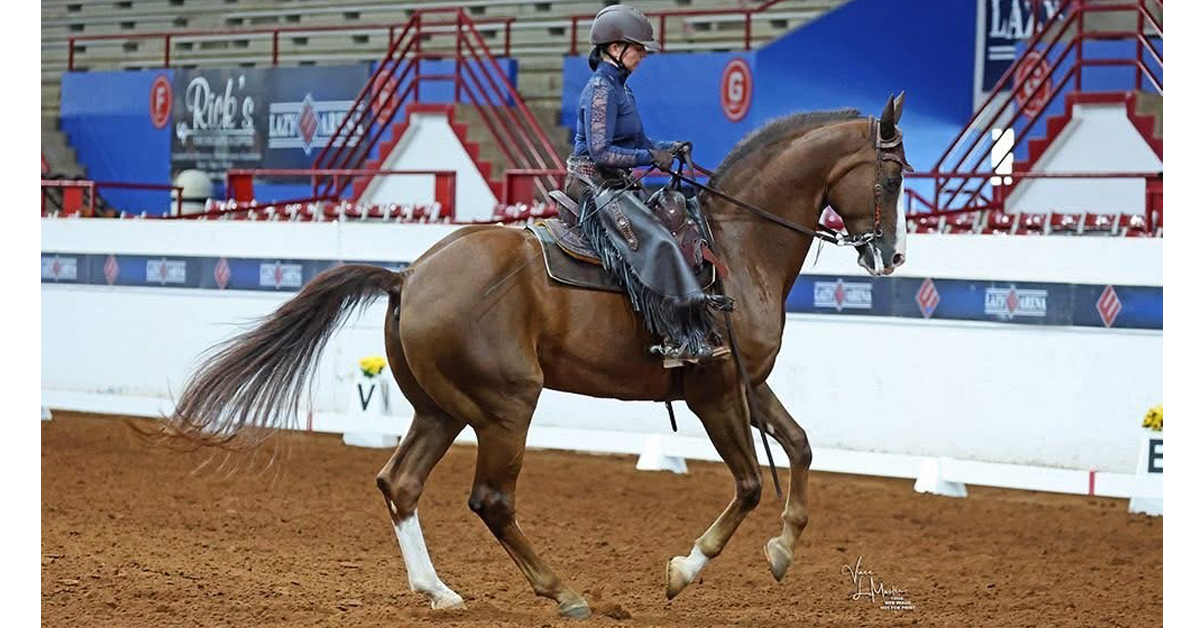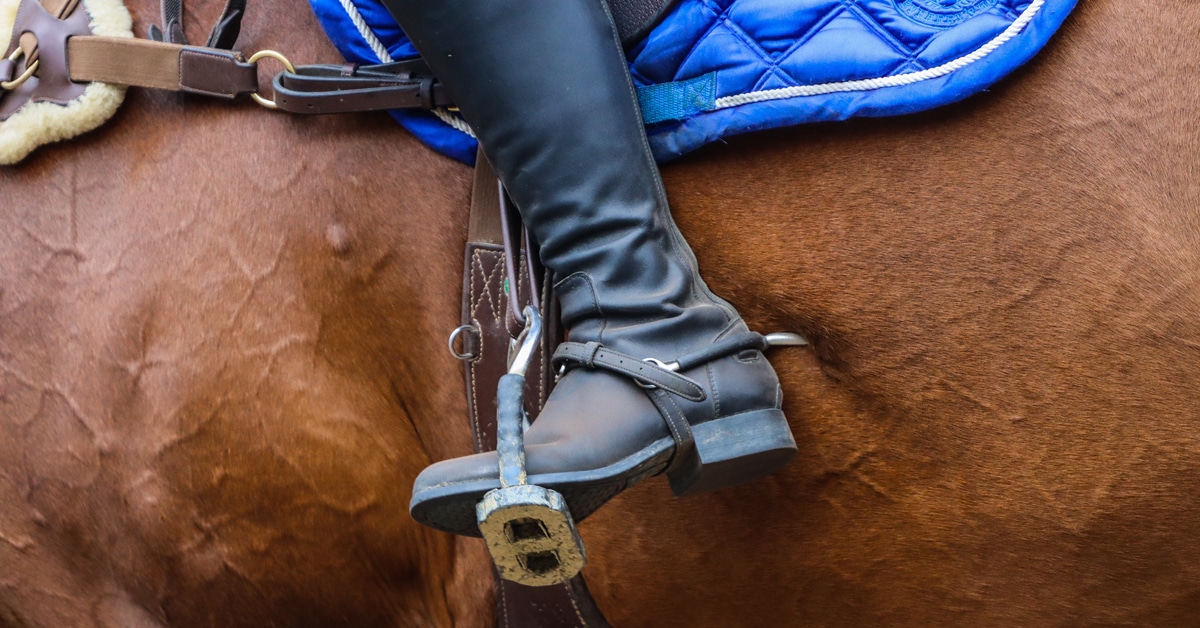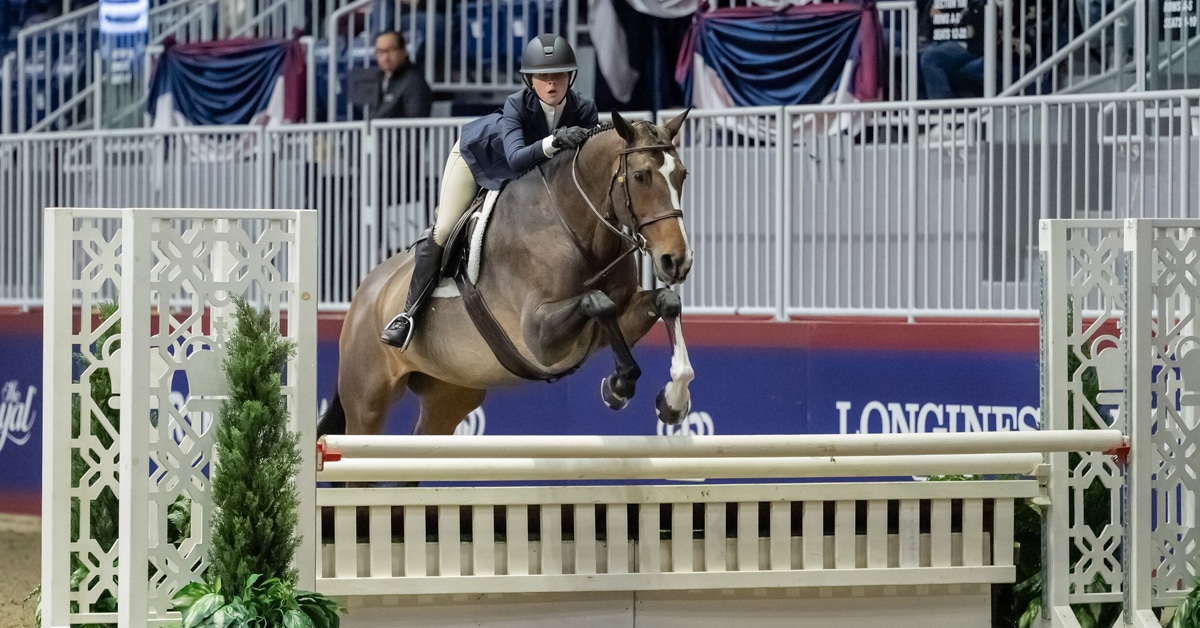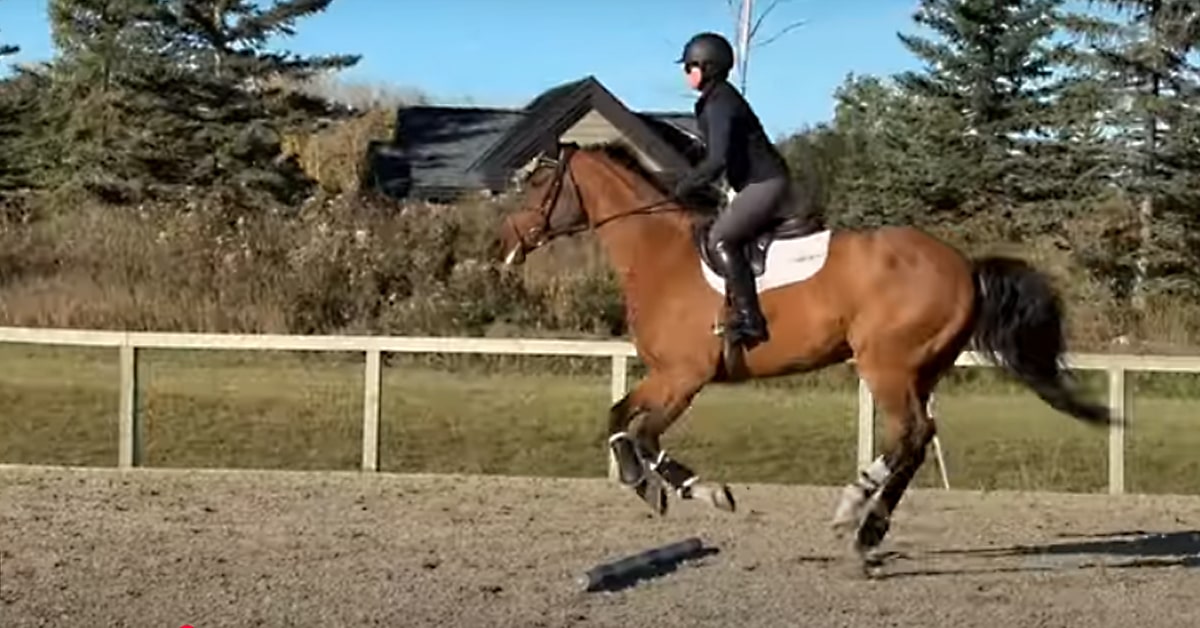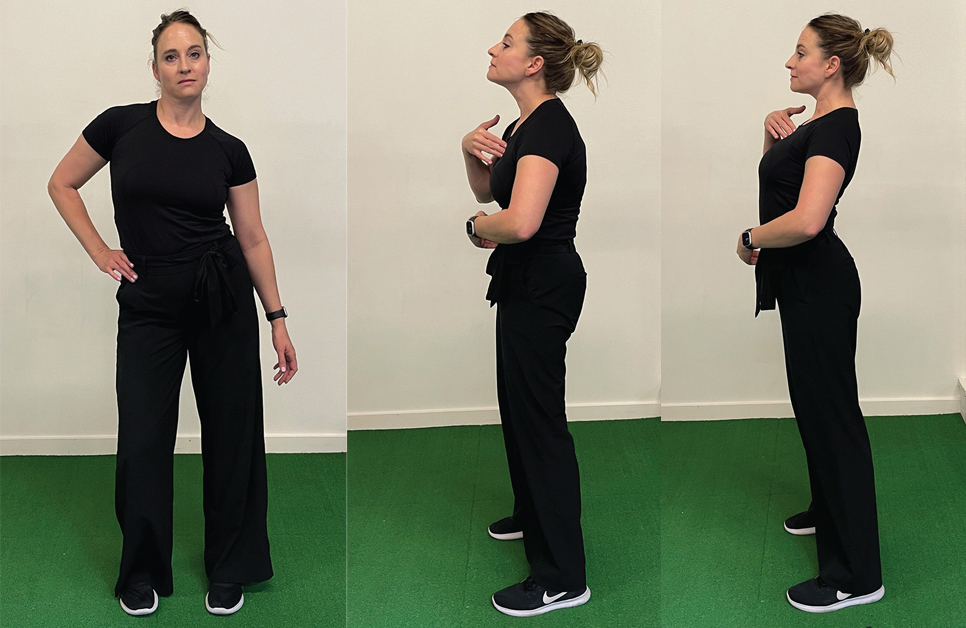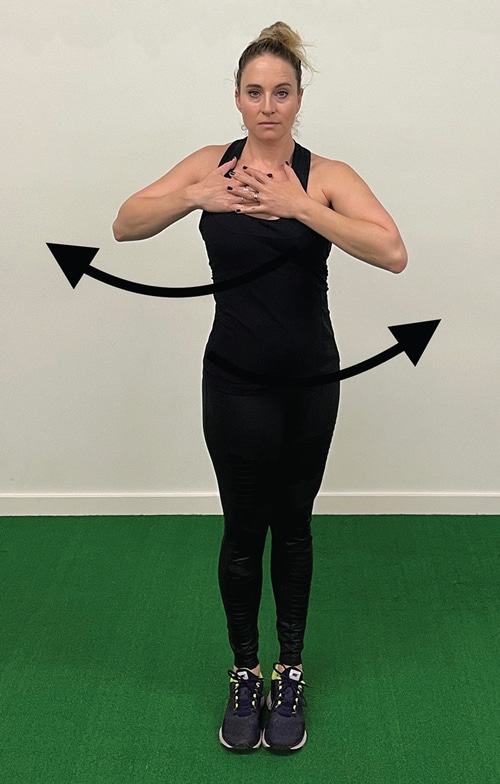“What kind of dance did you do?”
This question always makes me laugh, because: a) I’ve never taken a dance class and, b) the answer, “I grew up on a horse getting yelled at to keep my shoulders back,” is always surprising to the curious asker.
As a physiotherapist and equestrian, I understand now why “shoulders back” is more complicated than my teenage brain understood. It’s not just thoracic (ribcage) mobility or back strength.
To be able to sit up aesthetically and functionally is a complex interaction of stability and mobility of the pelvis, thorax (chest) and skull and, by extension, the hip and ankle. Our spine synchronizes these structures to keep our eyes “on the horizon” in three planes.
So being able to access thoracic, pelvis and skull mobility in three planes is critical to being effective and able to adapt our movement to balance our horse and to be strong and straight in the saddle. This is also critical to keeping our shoulders back.
Stability and mobility are intertwined by how we govern our movement and keep ourselves feeling stable. Compensation patterns occur postinjury. (The older the injury, the more ingrained it is in your nervous system.) This creates a pattern of one structure overworking and another underworking, producing an inefficient/dysfunctional relationship in the system. Unwinding these compensations requires a thorough assessment, as there is no ‘one size fits all.’
However, the good news is that sometimes assessment = treatment. The exercises below are designed to balance and strengthen what we need to be stable and strong throughout our body, with the result being able to get our shoulders back when we are riding.
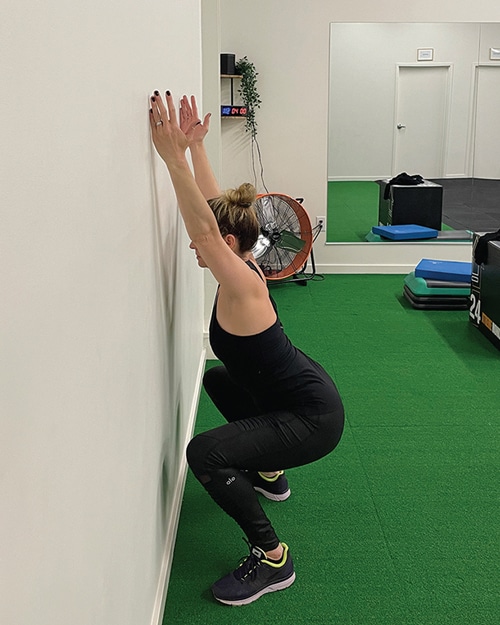
Wall-Facing Squats.
Wall-Facing Squats
For stability and functional riding muscles
Start by facing a wall, arms overhead and straight. Retract shoulders, activate core and drop hips between heels. If you’re unable to maintain core or neck stability in neutral, then hold where you’re successful for four seconds and push back to standing. The goal is a full squat with toes close to the wall, neutral spine and neck and the ability to pull your arms off the wall.
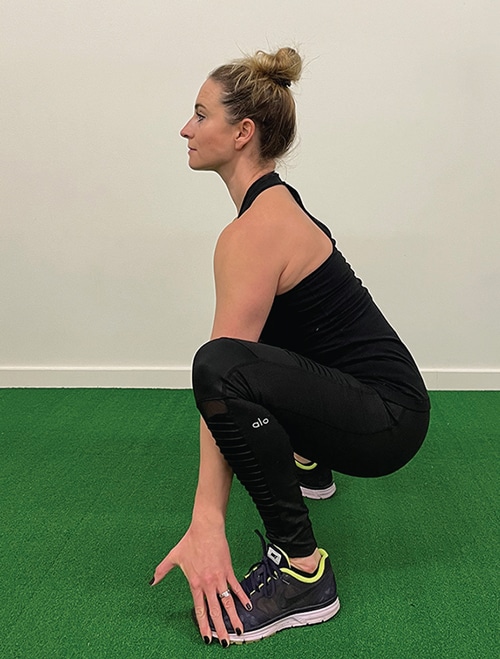
Russian Baby Maker.
Russian Baby Maker
For ankle and hip mobility
Keeping your feet straight ahead and a little wider than shoulder width, grab your feet and slowly lower your hips below your knees. Move into the tight ankle/hip and keep torso as upright as possible, using your arms to help you stabilize against your elbows.
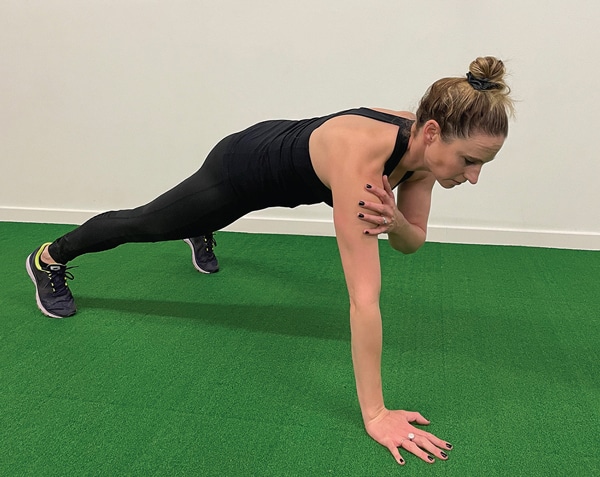
Plank Shoulder Taps.
Plank Shoulder Taps
For rotational stability
Get into a high plank starting with wide feet, and slowly raise one hand to tap the opposite shoulder, keeping pelvis still. To progress, narrow your feet.
Frontal/Sagittal Planes
Frontal plane (above left)
Keeping heels on the ground, bend right knee to drop pelvis, reach left arm down to left side, flex thorax and tip ear to right shoulder. Repeat on opposite side.
Sagittal plane (above centre)
Posteriorly tilt your pelvis/tuck tailbone under, round through back, then maintain gaze, lift chin up.
Sagittal plane reverse (above right)
To reverse, anteriorly tilt pelvis/arch back, drop sternum towards hands and tuck your chin.
Transverse Plane
Standing with feet hip-width in front of a mirror, place hands on sternum. Start to slowly rotate pelvis left, and ribcage rotates right. Keeping eye contact with yourself ensures your skull effectively follows your pelvis.
Rules: Your pelvis and skull are always doing the same thing; your ribcage moves in the opposite direction. Said differently, your lumbar (lower) spine and thoracic (centre) spine move together, and your neck does the opposite.
***
This article originally appeared in the 2025 Canadian Horse Annual – order your copy HERE.
The Latest
